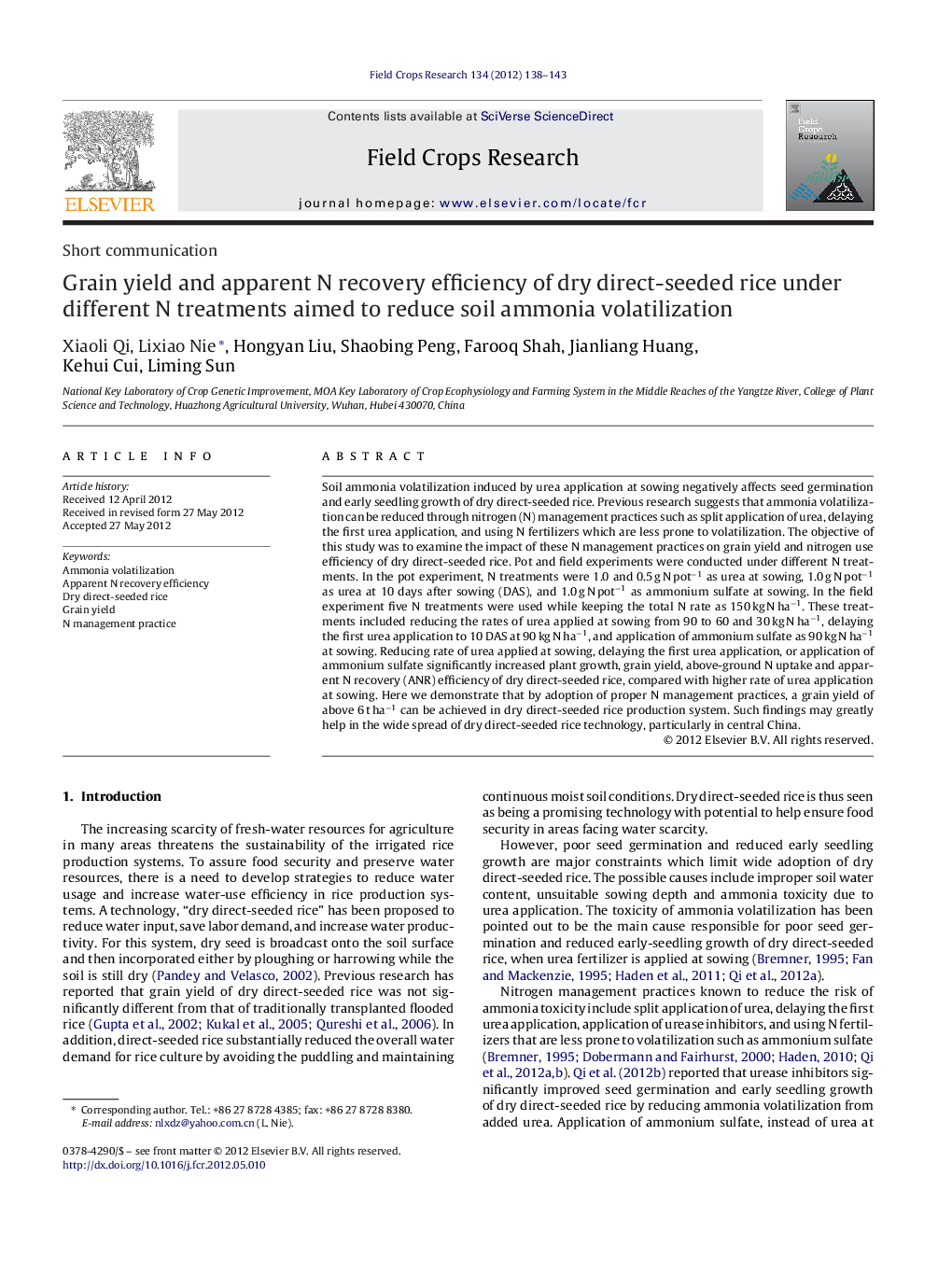| کد مقاله | کد نشریه | سال انتشار | مقاله انگلیسی | نسخه تمام متن |
|---|---|---|---|---|
| 4510364 | 1624729 | 2012 | 6 صفحه PDF | دانلود رایگان |

Soil ammonia volatilization induced by urea application at sowing negatively affects seed germination and early seedling growth of dry direct-seeded rice. Previous research suggests that ammonia volatilization can be reduced through nitrogen (N) management practices such as split application of urea, delaying the first urea application, and using N fertilizers which are less prone to volatilization. The objective of this study was to examine the impact of these N management practices on grain yield and nitrogen use efficiency of dry direct-seeded rice. Pot and field experiments were conducted under different N treatments. In the pot experiment, N treatments were 1.0 and 0.5 g N pot−1 as urea at sowing, 1.0 g N pot−1 as urea at 10 days after sowing (DAS), and 1.0 g N pot−1 as ammonium sulfate at sowing. In the field experiment five N treatments were used while keeping the total N rate as 150 kg N ha−1. These treatments included reducing the rates of urea applied at sowing from 90 to 60 and 30 kg N ha−1, delaying the first urea application to 10 DAS at 90 kg N ha−1, and application of ammonium sulfate as 90 kg N ha−1 at sowing. Reducing rate of urea applied at sowing, delaying the first urea application, or application of ammonium sulfate significantly increased plant growth, grain yield, above-ground N uptake and apparent N recovery (ANR) efficiency of dry direct-seeded rice, compared with higher rate of urea application at sowing. Here we demonstrate that by adoption of proper N management practices, a grain yield of above 6 t ha−1 can be achieved in dry direct-seeded rice production system. Such findings may greatly help in the wide spread of dry direct-seeded rice technology, particularly in central China.
► Soil ammonia volatilization negatively affects crop establishment of dry direct-seeded rice.
► Proper N management improves yield and ANR along with reducing ammonia volatilization.
► Over 6 t ha−1 grain yield was achieved for dry direct-seeded rice in central China.
Journal: Field Crops Research - Volume 134, 12 August 2012, Pages 138–143